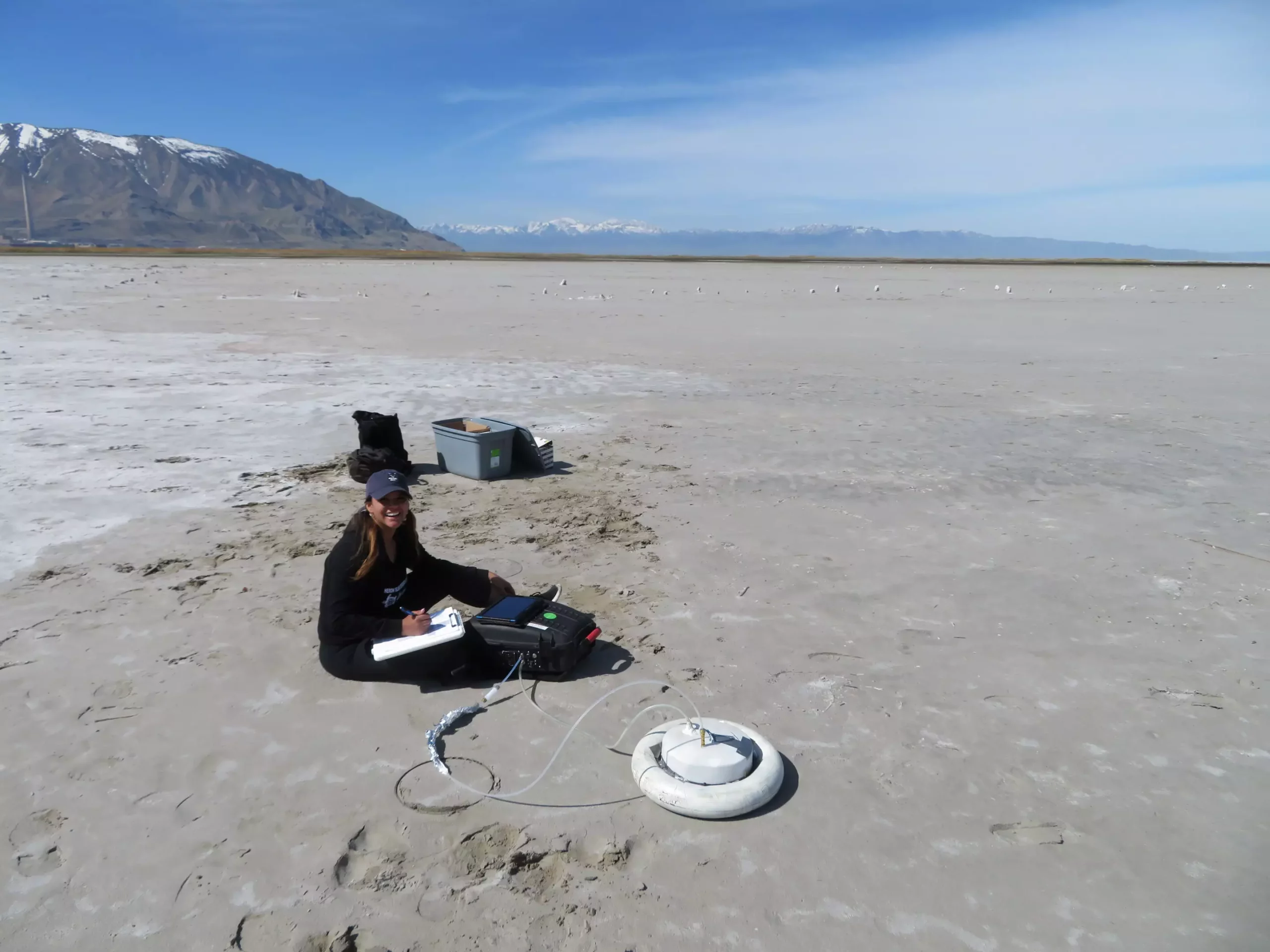The Great Salt Lake in Utah is emblematic not just of stark natural beauty but now stands as a harbinger of a growing environmental crisis. A recent study conducted by the Royal Ontario Museum (ROM) sheds light on an alarming reality that many have overlooked: the drying lake bed is releasing exorbitant amounts of greenhouse gases into the atmosphere, amounting to 4.1 million tons in just one year. This revelation reshapes our understanding of sources contributing to climate change, highlighting that lake desiccation—largely rooted in human activities—may play an exceedingly more significant role than previously acknowledged.
Understanding the Research Findings
The findings from the research paper titled “A desiccating saline lake bed is a significant source of anthropogenic greenhouse gas emissions,” published in the journal One Earth, indicate a sobering trend. Soren Brothers, the lead researcher, articulately pointed out the consequences of human interference in the natural hydrology of the Great Salt Lake. The study meticulously tracked the emissions of methane and carbon dioxide from the lake’s exposed sediments, an area that has been progressively drying out due to increasing consumption from agriculture and urban development.
What is striking is that while seasonal variations in water levels historically depended on natural meltwater flows, anthropogenic demands have dramatically altered the lake’s equilibrium. The depletion of this critical water body marks a sad irony: as we consume more water, we inadvertently release vast quantities of greenhouse gases that further exacerbate climate change—creating a diabolical feedback loop.
The Mechanism of Emission
The researcher’s measurements emphasized that the contributions of carbon dioxide and methane from the desiccated lake bed were closely tied to temperature patterns, revealing that warmer conditions bolster emissions from these newly exposed areas. The methodology involved methodical sampling of the lake bed every two weeks, utilizing sophisticated portable greenhouse gas analyzers—an approach often reserved for sophisticated research labs rather than expansive, desolate landscapes.
Furthermore, the predominance of carbon dioxide (94% of emissions) calls attention to how often the conversation around climate change zeroes in on methane’s potency as a greenhouse gas. Although methane’s short-term effects on warming are far more substantial—being 28 times more impactful than carbon dioxide—it is imperative we acknowledge carbon dioxide’s long-lived effects in the atmosphere. Together, the interplay between these gases paints a stark picture of the Great Salt Lake as an emerging greenhouse gas emitter.
A Global Perspective on Lake Desiccation
The implications of this research extend beyond Utah right into the global arena. Many iconic saline lakes around the world, such as the Aral Sea and Lake Urmia, face similar fates. These environments not only contribute to local biodiversity but are vital for regulating air quality and climate dynamics. As lakes empty out due to simultaneous agricultural, industrial, and residential water wants, the newly exposed lake beds serve as forgotten culprits in the fight against climate change—spitting out greenhouse gases while we remain blissfully unaware.
Moreover, as climate change continues to trigger drought conditions in various arid regions, the scale of the implications becomes unbearable. Lake desiccation adds layers of complexity to our understanding of climate feedback loops. It forces us to reevaluate and incorporate these newly recognized sources of greenhouse gases into our emissions assessments and mitigation strategies.
The Call for Urgent Action
The research underscores an urgent need: to integrate findings related to desiccated lakes into broader climate change strategies. Ignorance is no longer an option. The research team has made it clear that the historic significance of all lakes, including how they once behaved in terms of emissions, has shifted dramatically with human intervention. The Great Salt Lake is no longer just another body of water—it has become a critical indicator of the consequences of our environmental decisions.
Hence, this research should ignite discourse among policymakers and scientists alike. Earth’s ecosystems are irreversibly changing, and the desiccation of lakes must become a focal point for climate action. We can no longer afford to disregard the environmental ramifications of human activity; every drop of water that is drunk should not lead to a burden of greenhouse emissions.
A Crucial Perspective Shift
In light of these findings, it is vital to foster a critical examination of water consumption practices and their implications. The call to reframe our understanding of lakes as more than mere water bodies is imperative. Institutions and individuals must pivot towards more sustainable practices in water consumption, preserving vital ecosystems and mitigating climate change. In recognizing the Great Salt Lake as a slowly evolving climate crisis, we empower ourselves to act before we lose not just a lake, but an essential ally in our fight against climate change.

